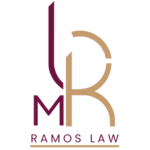Bankruptcy Basics
What is the difference between Chapter 7 and Chapter 13 bankruptcy?
Chapter 7 is a quick liquidation process that eliminates most unsecured debts, while Chapter 13 allows a 3-to-5-year repayment plan to retain your assets.
What debts can be discharged through bankruptcy?
Bankruptcy can discharge unsecured debts like credit cards, medical bills, and personal loans, subject to certain restrictions.
Can I keep my home or car if I file for bankruptcy?
Yes, especially under Chapter 13, which helps you catch up on missed payments and protects your assets.
What happens if I don’t qualify for Chapter 7?
If you don’t qualify for Chapter 7, you can still file under Chapter 13, which allows you to restructure your debts through a repayment plan.
Before Filing for Bankruptcy
What should I avoid before filing for bankruptcy?
Avoid incurring new debt, transferring assets, repaying loans to friends or family, or ignoring pending lawsuits or foreclosure actions.
Do I need to file my tax returns before filing for bankruptcy?
Yes, you must be current with your tax filings to file for bankruptcy.
What happens if I sell an asset for less than its value before filing for bankruptcy?
This may cause issues in your case, as it could be seen as an attempt to shield assets from creditors.
The Bankruptcy Process
How long does it take to complete a bankruptcy case?
A Chapter 7 case typically takes 4-6 months, while a Chapter 13 case involves a 3-to-5-year repayment plan.
What happens during the initial bankruptcy consultation?
We evaluate your income, debts, and assets to determine the best bankruptcy chapter for you and answer all your questions.
What is the means test?
The means test determines if you qualify for Chapter 7 based on your income and expenses.
General Advice
How does bankruptcy protect me from creditors?
Filing activates an “automatic stay,” which stops wage garnishments, foreclosures, and collection calls.
Can I rebuild my credit after bankruptcy?
Yes, with time and responsible financial management, many people successfully rebuild their credit after bankruptcy.
How much does it cost to file for bankruptcy?
Costs vary depending on the bankruptcy chapter and your circumstances. During your free initial consultation, we’ll explain all associated costs.
